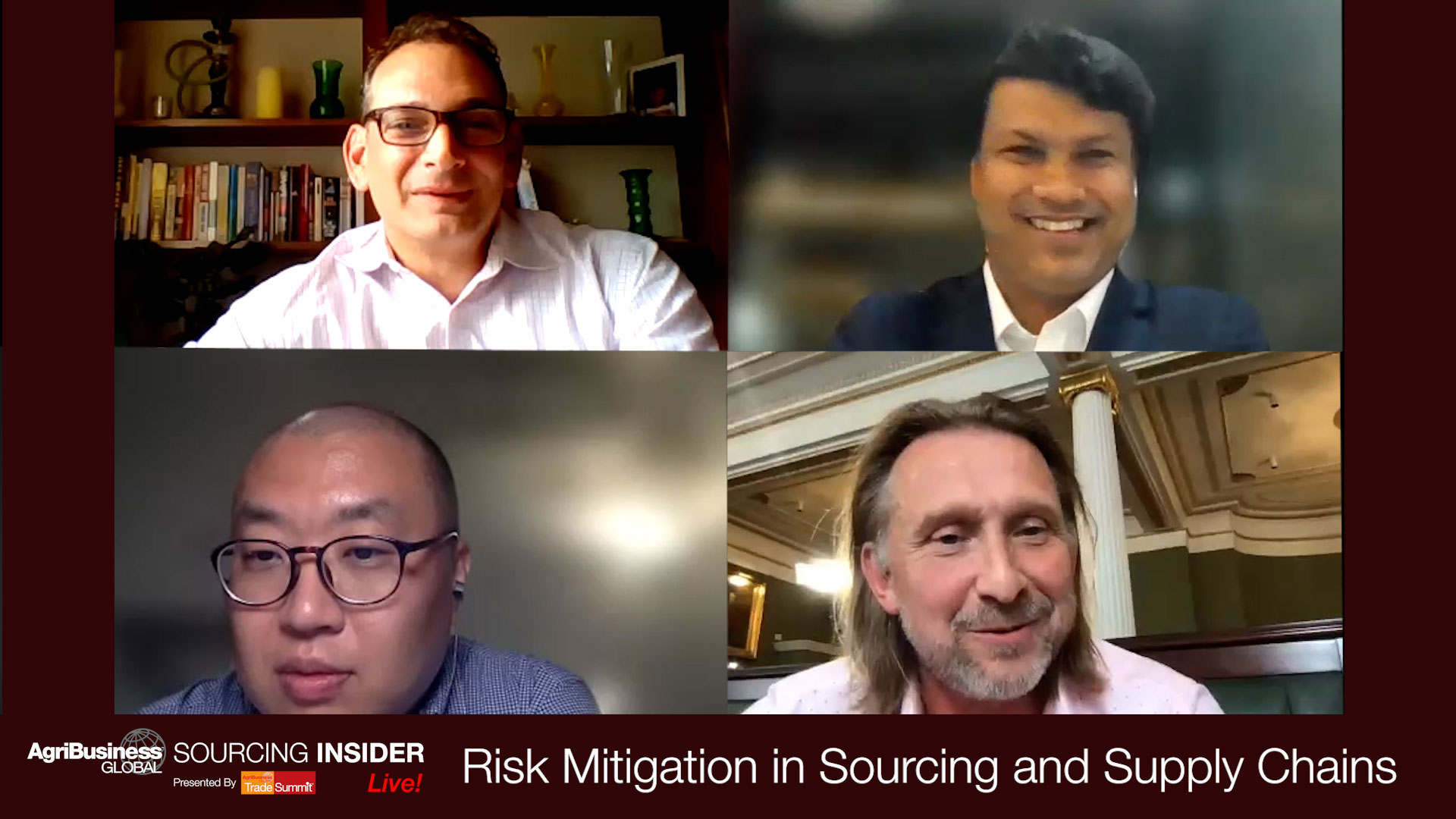Panel: Supply Chain Troubles to Continue into 2022
Editor’s note: Agribusiness Global recently hosted a panel discussion to learn what the current sourcing situation is in India and China, and how to manage logistic risk over oceans, in the air, and on roadways around the world. The discussion, “Risk Mitigation in Sourcing and Supply Chains,” was part of Agribusiness Global’s new Sourcing Insider Live. Here are four key takeaways from the event.
1. Be bold. Lock your purchases in early.
“From a buying perspective, the thing we’ve been advising our clients to do is to think about their sales and operations processes and make sure that you’re doing things early enough – pull demand forward – because the game has changed,” said Stephen Pearce, AWP Associates Director and expert practitioner in strategic sourcing. “It’s not about being able to spot certain molecules down from a buying perspective to make sure you get the right strike price to meet your budget. It is a question of getting the product or not.”
The logistics situation has evolved from one of not having enough shipping containers or the containers were in the wrong place, to a situation of not having enough ships to carry them. Port closures, such as the one at Ningbo in August, further muddle the picture.
“The advice we’ve been giving isn’t rocket science: do not take any chance with regard to waiting make sure you lock your volumes in early with your manufacturer or your formulator,” Pearce added. “Ensure you pull demand forward and be thinking about where your product needs to be, maybe two or even three months ahead of what you would normally be expected.”

2. There’s no clear signal on when logistics challenges will end – think later, rather than sooner.
Abishek Aggarwal, President of strategic alliances and corporate sales with Bharat Rasayan Limited in Delhi, does not expect to see any normalization of shipping before the end of 2022, due to a lack of investment in new vessels and profit losses.
In the interim, he says his company and other Indian competitors are absorbing shipping costs for all commitments for right now. In the future, he sees free on board (FOB) as the likely standard. “Prices are increasingly erratic from week to week, for both purchasers and suppliers,” Aggarwal says.
David Li, Business Manager, SPM Biosciences Co. Ltd. based in Beijing, sees a similar situation for Chinese suppliers. He notes that there is around a 30% shortage of freight coming into Chinese ports.
“China is building containers to try to feed global demand, but empty containers can’t come back into the country so there is a cost increase … In 2022 there are no clear signals for us to see,” Li said.
3. Glyphosate prices are headed up, up, up.
There is a huge shakeup in China’s energy sector with the country’s goal to reach peak carbon by 2030, and then decline to reach carbon neutrality by 2060.
Under China’s “double control” policy, Yunnan began to cut monthly yellow phosphorus production by 90% from August 2021 output levels from September through December in the region. Plants consuming between one and two times more energy than the industry average must cut production by 50%, and any plants consuming more than two times the industry average must cut production to 10% of capacity.
“The Beijing Winter Olympics are coming in February 2022, and especially during the spring holiday there will be restrictions and environmental audits. It already started this month, notably in Sichuan province,” Li said. “Glyphosate and glufosinate are produced heavily there, and the combination of these factors in the coming few weeks mean glyphosate prices will go up sharply.”
Aggarwal and other panelists advised buying now. “If you are able to get a trustworthy supplier who can keep their sales commitments based on your order or contract, there is no risk if you buy 25% of your requirement now until March, because you won’t see prices coming down drastically. So it can’t be a big loss, but it can be a big opportunity loss,” Aggarwal said.
4. On time, in full is trumping price nine times out of 10.
“I can’t remember a time when there’s been so many moving pieces,” Pearce said on the call. “It’s not just about price, it’s about making sure you’ve got the right landed cost. You can only make money if you have the products on time and in full to meet your customer demand. That is the most challenging thing. On time, in full is trumping price nine times out of 10.”
For some molecules that are less inflationary than glyphosate, Pearce advises buying less, but he reminds, “you’re not going to lose anything by having a position where you have 50% to 60% of your inventory needs covered in terms of your purchasing plan as opposed to your physical inventory between now and the end of next year.
“You can’t sell what you don’t have in your warehouse. Be bolder than perhaps you might be normally with regard to securing material.”






